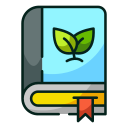Best Practices for Engaging Content on Sustainability
Chosen theme: Best Practices for Engaging Content on Sustainability. Welcome to a space where clear strategy and warm storytelling help people care, click, and change habits. Expect practical frameworks, honest examples, and community-shared wins. If this resonates, subscribe and tell us which sustainability questions you want answered next.
Know Your Audience and Their Sustainability Motivations
Interview real readers, not just personas. Discover the emotional triggers that inspire action, the practical barriers that stall momentum, and the tangible benefits they seek. Then craft sustainability messages that echo their language and honor their lived realities.


Know Your Audience and Their Sustainability Motivations
Some audiences love life-cycle assessments; others just want straightforward tips. Create tiers of content—from quick wins to deep dives—so each reader finds the right sustainability pathway without feeling overwhelmed, judged, or left behind.
Tell Human Stories, Not Just Stats
Introduce a neighbor, a teacher, or a small business owner navigating sustainable choices under real constraints. Their voice and vulnerability make abstract goals tangible, encouraging readers to take a first step that feels achievable.
Tell Human Stories, Not Just Stats
Pair every statistic with a scene: a family trimming food waste, a team switching to refill systems, a school planting native species. Stories provide context that transforms sustainability metrics into meaningful motivation.



Be Credible: Sources, Transparency, and Anti-Greenwashing
Use recognized sources, link directly to reports, and date your references. When numbers vary across studies, explain why. This openness turns skeptical readers into partners who respect your diligence and share your content confidently.
Be Credible: Sources, Transparency, and Anti-Greenwashing
If your carbon estimate is a rough calculation, say so. If you use assumptions, list them. Transparent footnotes and brief methodology blurbs help readers understand context and feel safe acting on your sustainability advice.
Visual Hierarchy and Plain Language
Use short paragraphs, descriptive subheads, and clear callouts. Replace jargon with everyday words. Well-placed visuals—simple charts, clean infographics—help busy readers grasp sustainability ideas quickly and share them widely.
Accessible Formats and Inclusive Design
Add alt text, high-contrast palettes, readable fonts, and captions. Offer transcripts for audio, summaries for longer reports, and multilingual versions when possible. Inclusive sustainability content welcomes everyone into the conversation.
Microcontent that Reinforces the Message
Craft compelling titles, previews, and social snippets that echo your core sustainability takeaway. Use consistent keywords and friendly tone. Ask readers to comment with their easiest next step, creating momentum right in the feed.

Activate Behavior: Clear CTAs and Frictionless Steps
End each piece with a single, specific sustainability action—download the checklist, swap one product, or join a local challenge. Reduce cognitive load so commitment feels light, immediate, and personally meaningful.


Activate Behavior: Clear CTAs and Frictionless Steps
Share brief testimonials, progress counters, or before-and-after photos. When readers see peers taking sustainable steps, they feel invited to participate. Encourage comments celebrating small wins to create a supportive feedback loop.
Optimize Distribution: Channels, SEO, and Timing
Design carousels for social, short videos for mobile, and long-form explainers for the blog. Repurpose core sustainability insights without repeating exact copy, preserving freshness while reinforcing your central message.
